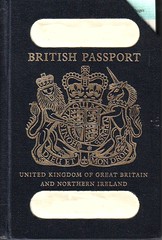The United States has outsourced the manufacturing of its electronic passports to overseas companies — including one in Thailand that was victimized by Chinese espionage — raising concerns that cost savings are being put ahead of national security, an investigation by The Washington Times has found.
The Government Printing Office’s decision to export the work has proved lucrative, allowing the agency to book more than $100 million in recent profits by charging the State Department more money for blank passports than it actually costs to make them, according to interviews with federal officials and documents obtained by The Times.
The profits have raised questions both inside the agency and in Congress because the law that created GPO as the federal government’s official printer explicitly requires the agency to break even by charging only enough to recover its costs.
Lawmakers said they were alarmed by The Times’ findings and plan to investigate why U.S. companies weren’t used to produce the state-of-the-art passports, one of the crown jewels of American border security.
…
Officials at GPO, the Homeland Security Department and the State Department played down such concerns, saying they are confident that regular audits and other protections already in place will keep terrorists and foreign spies from stealing or copying the sensitive components to make fake passports.
“Aside from the fact that we have fully vetted and qualified vendors, we also note that the materials are moved via a secure transportation means, including armored vehicles,” GPO spokesman Gary Somerset said.
But GPO Inspector General J. Anthony Ogden, the agency’s internal watchdog, doesn’t share that confidence. He warned in an internal Oct. 12 report that there are “significant deficiencies with the manufacturing of blank passports, security of components, and the internal controls for the process.”
The inspector general’s report said GPO claimed it could not improve its security because of “monetary constraints.” But the inspector general recently told congressional investigators he was unaware that the agency had booked tens of millions of dollars in profits through passport sales that could have been used to improve security, congressional aides told The Times.
…
GPO is an agency little-known to most Americans, created by Congress almost two centuries ago as a virtual monopoly to print nearly all of the government’s documents … Since 1926, it also has been charged with the job of printing the passports used by Americans to enter and leave the country.
…
Each new e-passport contains a small computer chip inside the back cover that contains the passport number along with the photo and other personal data of the holder. The data is secured and is transmitted through a tiny wire antenna when it is scanned electronically at border entry points and compared to the actual traveler carrying it.
According to interviews and documents, GPO managers rejected limiting the contracts to U.S.-made computer chip makers and instead sought suppliers from several countries, including Israel, Germany and the Netherlands.
…
After the computer chips are inserted into the back cover of the passports in Europe, the blank covers are shipped to a factory in Ayutthaya, Thailand, north of Bangkok, to be fitted with a wire Radio Frequency Identification, or RFID, antenna. The blank passports eventually are transported to Washington for final binding, according to the documents and interviews.
The stop in Thailand raises its own security concerns. The Southeast Asian country has battled social instability and terror threats. Anti-government groups backed by Islamists, including al Qaeda, have carried out attacks in southern Thailand and the Thai military took over in a coup in September 2006.
The Netherlands-based company that assembles the U.S. e-passport covers in Thailand, Smartrac Technology Ltd., warned in its latest annual report that, in a worst-case scenario, social unrest in Thailand could lead to a halt in production.
Smartrac divulged in an October 2007 court filing in The Hague that China had stolen its patented technology for e-passport chips, raising additional questions about the security of America’s e-passports.
Transport concerns
A 2005 document obtained by The Times states that GPO was using unsecure FedEx courier services to send blank passports to State Department offices until security concerns were raised and forced GPO to use an armored car company. Even then, the agency proposed using a foreign armored car vendor before State Department diplomatic security officials objected.
…
Questionable profits
…
The State Department is now charging Americans $100 or more for new e-passports produced by the GPO, depending on how quickly they are needed. That’s up from a cost of around just $60 in 1998.
Internal agency documents obtained by The Times show each blank passport costs GPO an average of just $7.97 to manufacture and that GPO then charges the State Department about $14.80 for each, a margin of more than 85 percent, the documents show.
The accounting allowed GPO to make gross profits of more than $90 million from Oct. 1, 2006, through Sept. 30, 2007, on the production of e-passports. The four subsequent months produced an additional $54 million in gross profits.
The agency set aside more than $40 million of those profits to help build a secure backup passport production facility in the South, still leaving a net profit of about $100 million in the last 16 months.
…
GPO plans to produce 28 million blank passports this year up from about 9 million five years ago.

